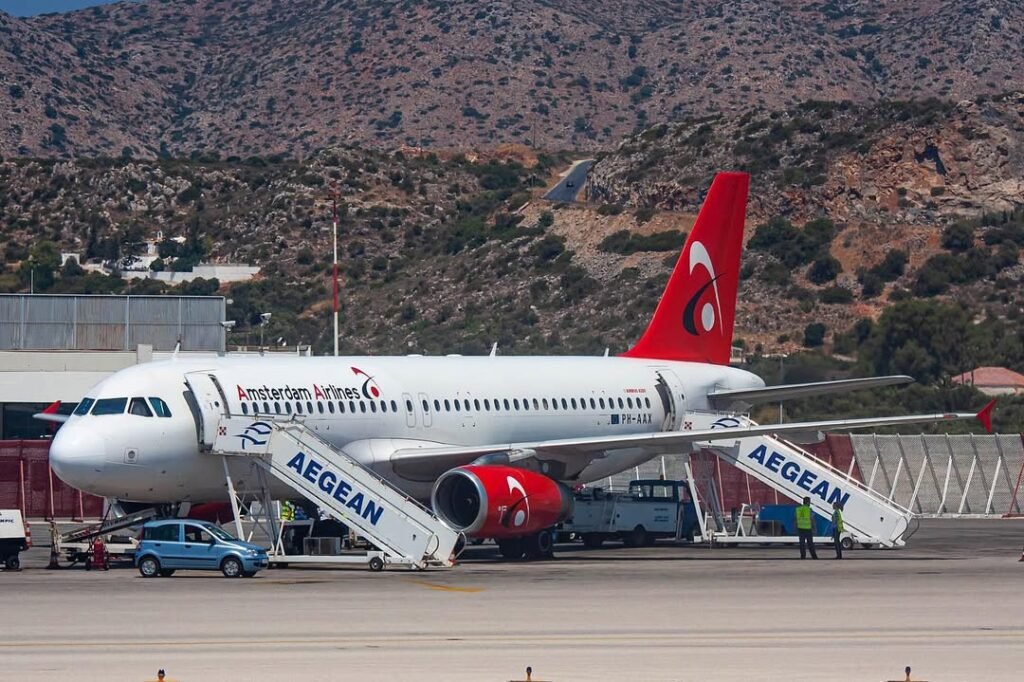Travelers from the United States, United Kingdom, and approximately 60 other countries planning to visit Crete and other parts of Greece will soon face a new travel ETIAS requirement with the upcoming implementation of the European Travel Information and Authorization System (ETIAS). However, the timeline for this significant change has recently shifted, with implementation now expected later than previously announced.
What is ETIAS?
Unlike traditional visas, ETIAS is a pre-travel authorization system designed to enhance security within the Schengen Zone while still allowing relatively seamless travel. The authorization will be electronically linked to travelers’ passports with no physical documentation required.

Updated ETIAS Implementation Timeline
According to the latest official information from EU authorities, ETIAS is currently not operational and will not begin in the first half of 2025 as previously suggested. The most current implementation schedule indicates:
- Spring 2025: Entry into force of the Entry/Exit System (EES)
- Fall 2025: ETIAS introduction with a 6-month transitional period
- Spring 2026: ETIAS authorization becomes mandatory
This revised timeline means most travelers visiting Greece during 2025 will likely not need ETIAS authorization, though the Entry/Exit System will change how non-EU nationals enter the Schengen Area.
It’s important to note that implementation dates for both systems have been postponed several times, and further adjustments are possible. The European Union is working toward a phased launch, with the EES scheduled to precede ETIAS by approximately six months.
Understanding EES and ETIAS: Two Separate Systems
The Entry/Exit System (EES) and ETIAS are two distinct but related initiatives that will transform how non-EU nationals enter Greece and other Schengen countries:
The Entry/Exit System (EES) is an automated border control system that:
- Replaces manual passport stamping with digital registration
- Collects biometric data (facial image and fingerprints) at border checkpoints
- Records entry/exit times and locations automatically
- Tracks duration of stays to identify overstays
- Requires no pre-travel application or fee – processing happens at the border
ETIAS will function as a pre-screening system requiring advance online authorization before travel. It works similarly to the US ESTA system but is separate and unique to the Schengen Area.
Visitors to popular Greek destinations like Crete should be prepared for both systems, as they will ultimately work in tandem to manage entry into the country.

ETIAS Application Process and Requirements
Once operational, obtaining ETIAS authorization will involve a straightforward online application:
- Applications must be completed through the official ETIAS website
- Required information includes personal details, passport information, and travel plans
- Applicants will need to answer security and health-related questions
- The standard fee is €7 (approximately $8), with possible exemptions for travelers under 18 or over 70
- Processing typically takes minutes to a few days, but applying at least 96 hours before departure is recommended
Most importantly, your passport must be valid for at least three months beyond your planned departure date from the Schengen Area. Once approved, the ETIAS authorization remains valid for three years or until your passport expires, whichever comes first.
Understanding Transitional and Grace Periods
The EU has designed a gradual implementation approach to help travelers adjust to the new requirements:
- 6-Month Transitional Period: Following ETIAS launch (expected Fall 2025), travelers can still enter without authorization if they meet other entry requirements.
- Additional 6-Month Grace Period: After the transitional period ends, first-time visitors (those who haven’t entered the Schengen Area since the end of the transitional period) can still enter without ETIAS authorization.
This means that mandatory ETIAS requirements might not affect many travelers until approximately one year after the initial launch date.

Warning: Beware of ETIAS Scams
As the implementation date approaches, travelers should be aware of fraudulent websites claiming to process ETIAS applications before the system is operational. Currently, no legitimate service can process ETIAS applications as the system has not yet launched.
Official applications will only be available through the EU’s authorized website once the system becomes operational. Any website currently claiming to offer ETIAS processing is fraudulent and should be avoided.
Countries Affected by ETIAS
Once implemented, ETIAS will affect citizens from 59 visa-exempt countries, including:
- United Kingdom
- United States
- Canada
- Australia
- Japan
- South Korea
- Brazil
- Mexico
- New Zealand
Additionally, travelers from countries like Albania, Bosnia and Herzegovina, Georgia, Montenegro, North Macedonia, Serbia, and Ukraine will also need to apply for ETIAS despite having various visa facilitation agreements with the EU. You can find the complete list of affected countries here.

Planning Your Greece Trip for 2025-2026
For travelers planning to visit Crete (or any other part of Greece), here’s what to expect:
- Early-Mid 2025: Neither ETIAS nor EES yet implemented
- Spring-Fall 2025: EES likely operational; expect new entry procedures with biometric registration
- Fall 2025-Spring 2026: ETIAS transitional period; authorization encouraged but not required
- From Spring 2026: ETIAS likely becomes mandatory
While these timelines provide general guidance, travelers should stay informed about official announcements as implementation dates may shift. The phased approach is designed to minimize disruption, but awareness of these upcoming changes will help ensure smoother travel experiences.
Stay informed about these evolving travel requirements by subscribing to our newsletter for the latest updates as official launch dates are confirmed.
Published on: March 2nd, 2025

